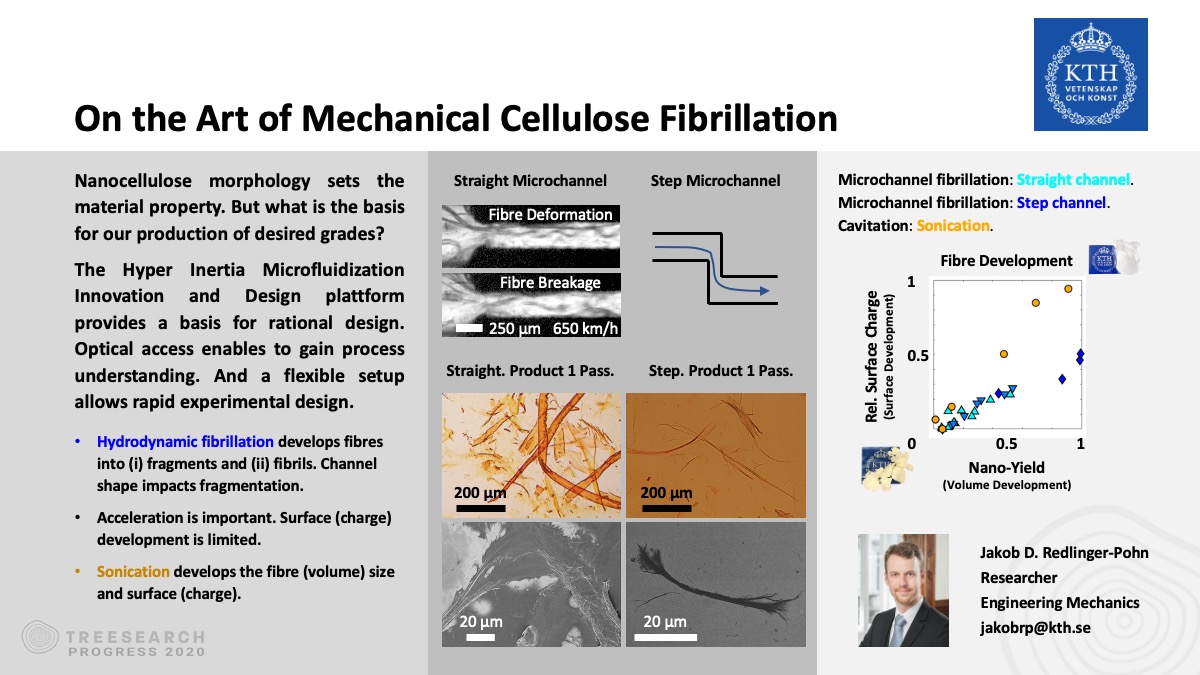On the Art of Mechanical Cellulose Fibrillation
The foundation of our envisioned bio-society is renewable and environmentally friendly building blocks of reliable and constant quality, for example, cellulose nanofibrils (CNF). CNF is mostly sourced from lignocellulose involving high-energy processes. These processes were however not designed for CNF production, but borrowed from other purposes. The comminution of cellulose fibres and the production of CNF is still discussed and a mechanistic basis for process design and optimization is missing. An unsatisfactory state-of-the-art that we attempt to change to produce CNF efficient and reliable within the Hyper Inertia Micro-Fluidization (HIMF) and Cavitation Fibrillation Cellulose Fibre (CaFiCeFi) project. In the HIMF project, we set up a flexible test-bench that allows us to study the fibre development in hyper inertia flows (for example strong acceleration and high shear) in-situ and ex-situ. We find that the channel shape and size have a significant impact on the fibrillation which appears favored by an asymmetric acceleration. Fibre accelerated to ca. 100 m/s are recorded to behave like a rubber band that is loaded during acceleration and undergoes a contracting deformation afterward. Fibrillation of carboxymethylated fibres (charge of approx. 600 µeq/g) was incomplete in microchannels and length degradation was noticed before a complete isolation of the microfibrils was achieved. A more complete isolation of fibrils was achieved by acoustic cavitation in the CaFiCeFi project at comparable low energy input. This treatment however also caused a strong degradation in the fibril’s length direction.


